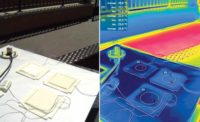A study, "Buildings...The Gifts That Keep On Taking: A Framework for Integrated Decision-Making," conducted by APPA's Center for Facilities Research, explores the need for a comprehensive asset investment strategy on campus. "We call buildings ‘the gifts that keep on taking' because the predominant share of the total cost-of-ownership lies in the recurring costs of maintenance, upkeep, and periodic renewal," said Terry Ruprecht, campus academic facilities officer at University of Illinois at Urbana-Champaign and one of the study's principal investigators. "So while receiving funding to construct a building is always welcome, buildings that are not adequately funded across their estimated lives often cost more to maintain than the initial gift can bear."
Higher education institutions spend about $20 billion annually on facilities operations - including maintenance, energy, and utilities - and from $15-18 billion annually for the construction of new facilities and/or the renovation of existing buildings. College and university campuses provide more than five billion sq ft of floor space in 240,000 buildings, which have a current replacement value (CRV) that is estimated at more than $700 billion. In addition, there is a backlog in deferred maintenance estimated at more than $36 billion, or 5% of CRV. (The previous numbers are extrapolated from a 1995 APPA/NACUBO/Sallie Mae study.)
"Legislators like to dole out cash, make a big splash, put people to work," according to Rod Rose, a strategic consultant with STRATUS, a division of Heery International and the study's primary author. "New construction is visible, tangible, and attractive to donors. But, initial investment often overlooks or underestimates maintenance and operations costs," Rose said.
The study shows that significant numbers of older buildings and campus infrastructure are deteriorating, requiring major future investments in renovation and the replacement of fundamental support systems. And yet, across the nation there is no standard practice for the investment in and management of physical assets; integrated decision-making is not the norm; and decisions about investing in facilities are often made sequentially and independently, and without data that is sufficient, consistent, or timely. "This tends to minimize rather than optimize long-term flexibility in the use and function of spaces," Rose said.
The approach proposed by Rose, Ruprecht, and their colleague Doug Christensen, advocate with the Office of Administrative Solutions at Brigham Young University, starts with a basic set of questions: Why should we invest? What can we afford? Where should we invest? When should we invest?
How much should we invest? Together, these basic questions form the foundation elements of a strategic investment pyramid that leads to the development of a comprehensive, integrated asset investment strategy on which all facilities decisions can be based.
According to Christensen, this research will lead to a change in the paradigm of facilities decision-making and stewardship. "Facilities are long-term investments requiring conscious and consistent care across their life cycles. An asset investment strategy provides a firm foundation for institutional decision-makers to assess strategic priorities, understand facilities performance criteria, and determine appropriate information about costs in order to make a sound investment in their facilities portfolio over time," Christensen said.
"Buildings...The Gifts That Keep On Taking: A Framework for Integrated Decision-Making" is scheduled to be released by APPA Publications this fall.




